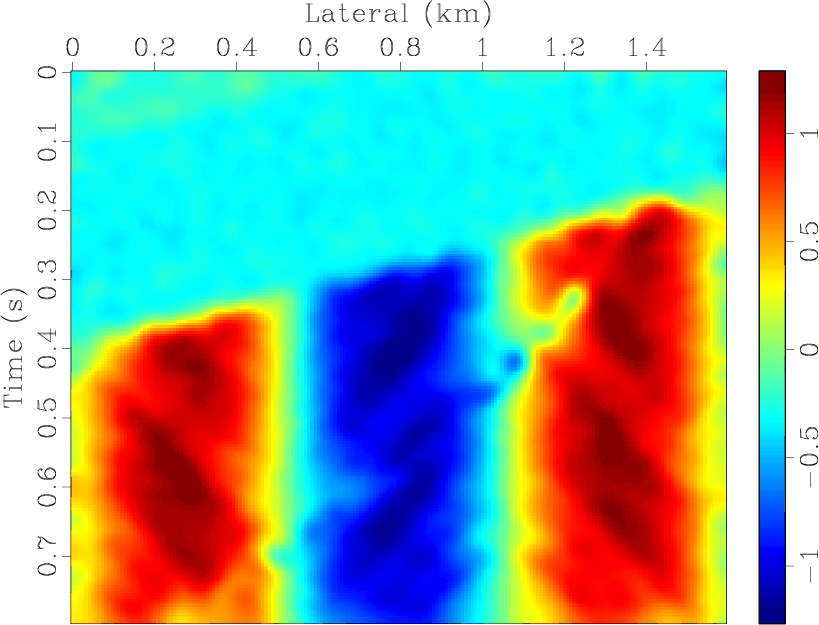sfdivn divides two signals, producing a smooth output. It treats division as inversion and regularizes the inversion using shaping regularization.
The following example from jlu/riesz/sigmoid shows the local dip computed by a smooth division of two components of the Riesz transform.

The denominator file is provided by den=. The shaping regularization is controlled by smoothness radii rect1=, rect2=, etc. and the maximum number of iterations niter=. The iterations can be accelerated by using eps= parameter. To suppress the output of iteration statistics on the screen, use verb=n.
codemore code
~~~~